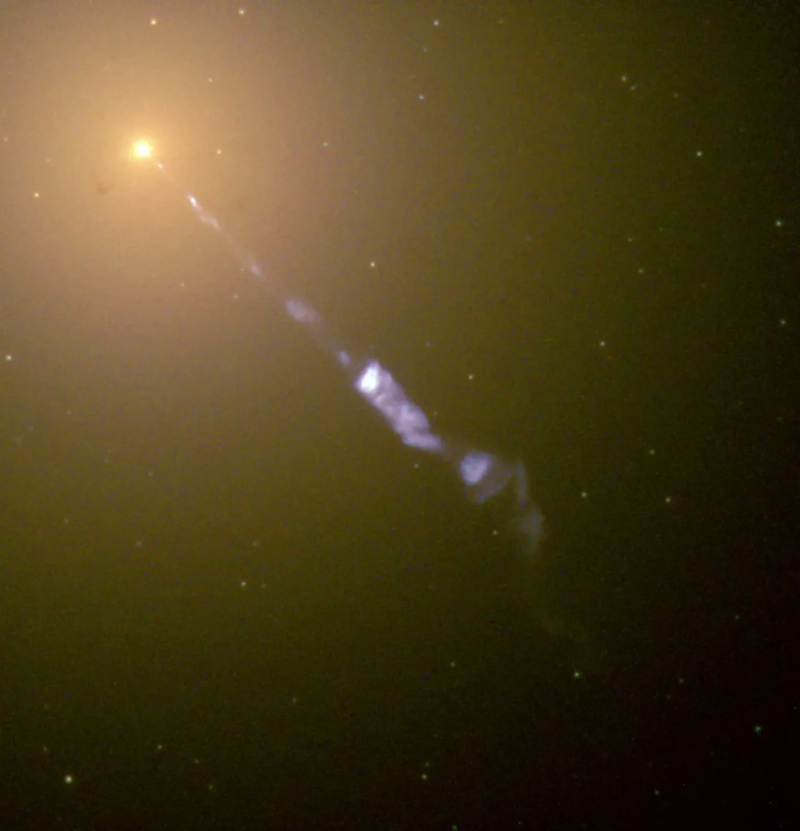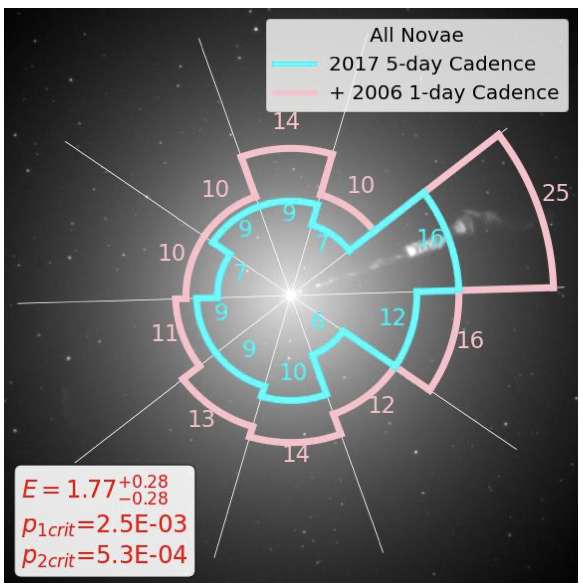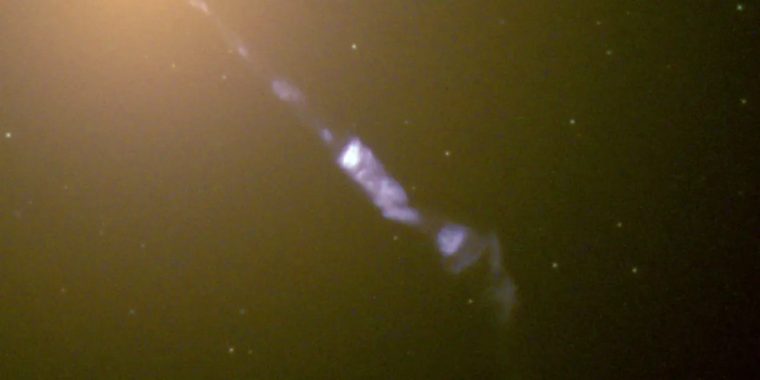
The intense electromagnetic environment near a black hole can accelerate particles to a large fraction of the speed of light and sends the speeding particles along jets that extend from each of the object’s poles. In the case of the supermassive black holes found in the center of galaxies, these jets are truly colossal, blasting material not just out of the galaxy, but possibly out of the galaxy’s entire neighborhood.
But this week, scientists have described how the jets may be doing some strange things inside of a galaxy, as well. A study of the galaxy M87 showed that nova explosions appear to be occurring at an unusual high frequency in the neighborhood of one of the jets from the galaxy’s central black hole. But there’s absolutely no mechanism to explain why this might happen, and there’s no sign that it’s happening at the jet that’s traveling in the opposite direction.
Whether this effect is real, and whether we can come up with an explanation for it, may take some further observations.
Novas and wedges
M87 is one of the larger galaxies in our local patch of the Universe, and its central black hole has active jets. During an earlier period of regular observations, the Hubble Space Telescope had found that stellar explosions called novas appeared to be clustered around the jet.
This makes very little sense. Novas occur in systems with a large, hydrogen-rich star, with a nearby white dwarf in orbit. Over time, the white dwarf draws hydrogen off the surface of its companion, until it reaches a critical mass on its surface. At that point, a thermonuclear explosion blasts the remaining material off the white dwarf, and the cycle resets. Since the rate of material transfer tends to be fairly stable, novas in a stellar system will often repeat at regular intervals. And it’s not at all clear why a black hole’s jet would alter that regularity.
So, some of the people involved in the first study got time on the Hubble to go back and have another look. And for a big chunk of a year, every five days, Hubble was pointed at M87, allowing it to capture novas before they faded back out. All told, this picked up 94 novas that occurred near the center of the galaxy. Combined with 41 that had been identified during earlier work, this left a collection of 135 novas in this galaxy. The researchers then plotted these relative to the black hole and its jets.

The area containing the jet (upper right) experiences significantly more novas than the rest of the galaxy’s core.
Lessing et. al.
Dividing the area around the center of the galaxy into 10 equal segments, the researchers counted the novas that occurred in each. In the nine segments that didn’t include the jet on the side of the galaxy facing Earth, the average number of novas was 12. In the segment that included the jet, the count was 25. Another way to look at this is that the highest count in a non-jet segment was only 16—and that was in a segment immediately next to the one with the jet in it. The researchers calculate the odds of this arrangement occurring at random as being about one in 1,310 (meaning less than 0.1 percent).
To get a separate measure of how unusual this is, the researchers placed 8 million novas around the center of the galaxy, with the distribution being random but biased to match the galaxy’s brightness under the assumption that novas will be more frequent in areas with more stars. This was then used to estimate how often novas should be expected in each of these segments. They then used a wide variety of wedges: “In order to reduce noise and avoid p-hacking when choosing the size of the wedge, we average the results for wedges between 30 and 45 degrees wide.”
Overall, the enhancement near the jet was low for either very narrow or very wide wedges, as you might expect—narrow wedges crop out too much of the area affected by the jet, while wide ones include a lot of space where you get the normal background rate. Things peak in the area of wedges that are 25 degrees wide, where the enrichment near the jet is about 2.6-fold. So, this appears to be real.

